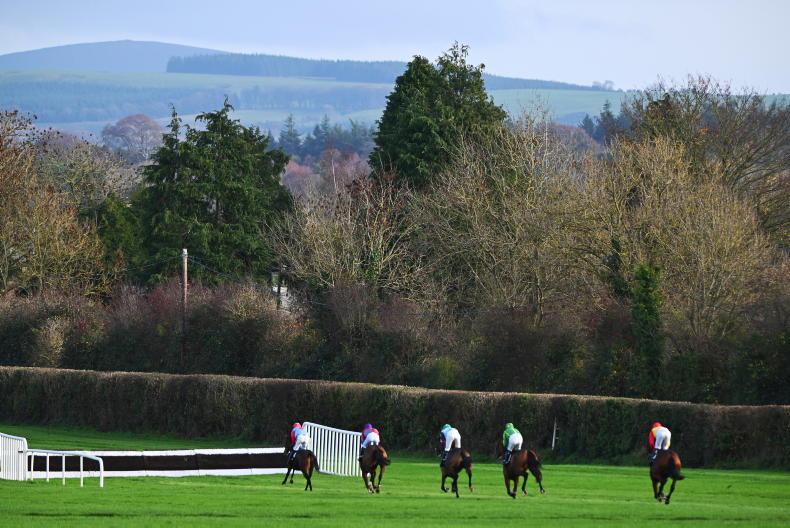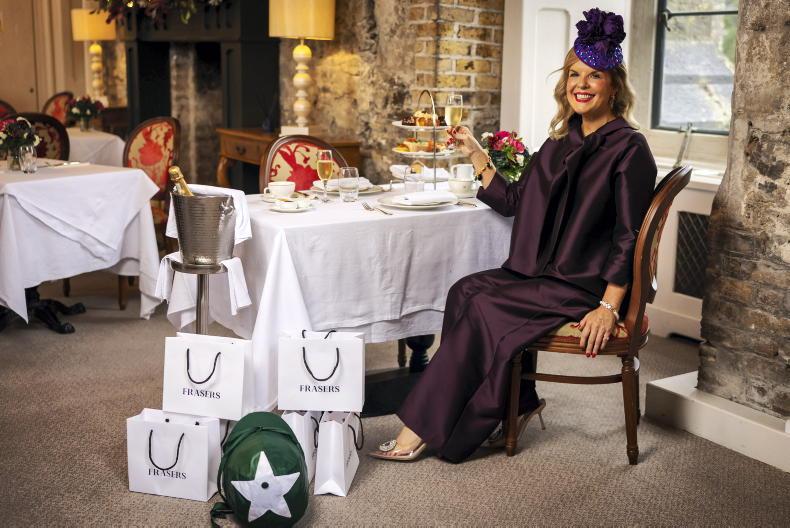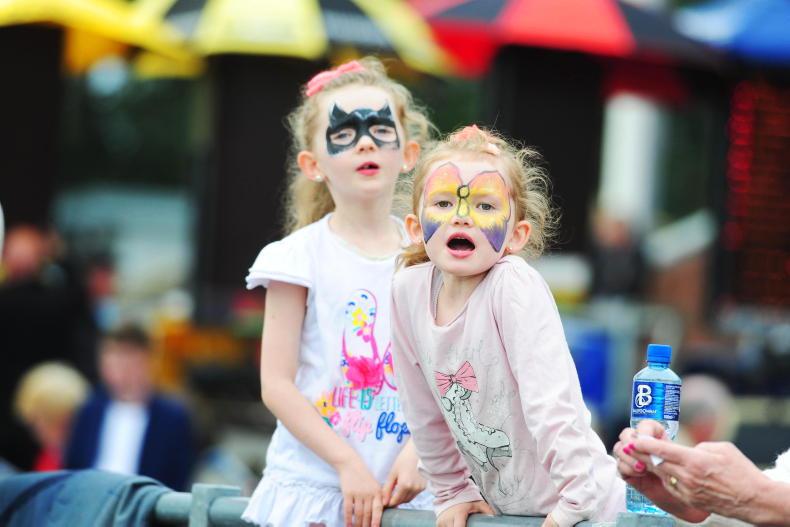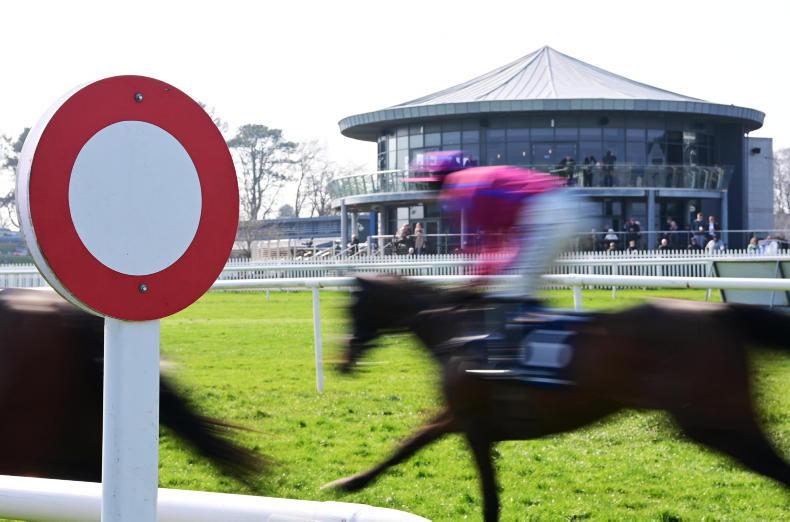THE Naas Race Company was formed at a meeting on August 26th, 1922.
It had been a momentous time in Irish history with the deaths of both Arthur Griffith and Michael Collins during the previous fortnight.
The meeting was chaired by Thomas Whelan while its attendees included Patrick Berney, Michael Conway, Edward Dowling, Charlie Farrell, Edward Brophy and James Conway, Jr. The last-named individual was appointed secretary and manager.
The Civil War’s impact on Co Kildare was highlighted again at the end of January 1923 when Palmerstown House, the residence of the 7th Earl of Mayo, became the latest of approximately 200 ‘big houses’ destroyed across the land.
Lord Mayo, one of W.T. Cosgrave’s nominated senators in Seanad Éireann, was a major patron of the horseracing industry. His father, the 6th Earl, had been master of the Kildare Hunt prior to his appointment as governor-general of India in 1869. The 6th Earl also established the Palmerstown Breeding Association for Improving the Breed of Horses in Ireland.
The war came a step closer to Naas on February 17th with the destruction of Mullaboden, General Sir Bryan Mahon’s home near Ballymore Eustace. General Mahon was one of the seven founding directors of the Naas Race Company.
Armed with 70 tins of stolen petrol, the raiders poured the fuel all over his furniture and broke the windows before applying the matches. One raider dressed himself in one of the general’s army tunics for a photo, while another carried a gramophone out of the house, placed it on the front steps, and wound it up so that music echoed around the crackling flames.
Two grooms who came upon the scene while exercising horses were told to ‘clear off’ by a man wielding a short-barrelled shotgun. The house was thoroughly destroyed by the time the Curragh military fire brigade arrived on the scene.
Bold ambitions
With the end of the Civil War in May 1923, the Naas Race Company took a pause and prepared for the next phase. They had not been idle in the interim and the Tipper farm was already taking the shape of a proper racecourse. The lands were inspected by ‘several experienced racing men, who … expressed unqualified approval of the proposed Racecourse and consider that its situation could not be excelled.’ Among these was Arthur Blennerhassett, the inspector of courses for both the Turf Club and the National Hunt Committee, who ‘gave his sanction to the laying out of the course as planned’.
With green lights from the authorities, the Naas Race Company was incorporated as a limited company in June 1923. Its immediate mission was to acquire absolute ownership of the lands at Kingsfurze and parts of Maudlings.
According to its Memorandum of Association, the company sought to build ‘a course for steeplechasing and a course for flat racing, with a straight six-furlong course’, as well as ‘suitable motor and carriage enclosures’ and a grandstand ‘for about 3,000 persons’. When the subscription list opened on June 26th, the prospectus informed its readers that the company’s authorised capital was £15,000, divided into 15,000 ordinary shares valued at £1 each. Some £6,000-worth of shares were to be paid to the six vendors, each of whom was also a director, who had conveyed the lands to the company.
There was evidently no shortage of interested parties. Three days before the subscription list closed on July 10th, the press noted that ‘the necessary money for the new Naas Racecourse is almost subscribed. Several well-known Turf celebrities have taken shares’.
Thomas Whelan (1869-1931)
THOMAS Whelan, the co-founder and first chairman of the Naas Race Company, was born in 1869. He was a son of Thomas Whelan and his wife Rosanna, née Doyle, and grew up at Ballybrack, just north of Hacketstown, near the Carlow-Wicklow border.
He moved to Naas in his 20s and initially worked for the eminent merchant William Staples at the Commercial House on Main Street North. In 1902, Thomas took over the premises, which he developed into an extensive wine and grocery business over the next 30 years.
He took a keen interest in the social and sporting life of the county, becoming chairman of the Naas Race Company upon its inception, as well as the course manager ahead of the first meeting. He was also chairman of the North Kildare County Club and a member of the County Kildare Golf Club and the Naas rugby, tennis and hockey clubs.
The bachelor was associated with numerous movements that sought to improve the welfare of the community and served as chairman of the Naas Catholic Institute for 30 years. He was also a member of the County Kildare Joint Technical Committee.
With his keen business acumen and a reputation for integrity, Whelan was elected to the Naas Urban Council in 1928. High hopes for his political future were dashed by his unexpected death in 1931.
In his will, he requested that his loyal assistant Tommy Fletcher be given the first option to buy the Commercial House, along with its furniture, stock-in-trade and whiskey, for a fixed price of £2,000. The money was to go to his niece, Marie Whelan.
Tommy duly bought the pub and changed the name to ‘Thomas Fletcher’ but his mentor’s initials ‘TW’ can still be seen on the wrought iron gate by the pub. Thomas Whelan’s brother James ran the Royal Hotel (now The Gem) on Naas’s Poplar Square, having married Annie Doran, the daughter of its owner.
Charlie Farrell (1866-1938)
BORN in 1866, Charlie Farrell was a son of Henry and Kate Farrell of Ballinagappa, Clane, Co Kildare. An enthusiast for sport in all spheres, Charlie was a life-long friend and sometime coach of Thomas Conneff, an international athletic sensation in the 1880s and 1890s who set and broke several world records. James Joyce immortalised Conneff in Ulysses.
A founding director of the Naas Race Company, he was its chairman from 1931 until his death in 1938. He was also a steward from the inaugural meeting and reportedly held a substantial share in the business. He certainly took the keenest interest in the progress of the company and improving amenities on the course. Farrell, who was closely connected with the racehorse industry in general, also bred several well-known horses, such as the sprint specialist, Tay End.
An expert shot, he represented Ireland in a shooting contest against Scotland when he was over 70 years of age. He served as Vice-President of the Irish Clay Pigeon Shooting Association and President of the Maynooth Gun Club.
Regarded as a ‘most unassuming’ man with ‘a truly great nature’, he adored roaming the moors and downs of Kildare and ‘abhorred ostentation and show’. In 1924, he was closely involved in the founding of Naas Athletic Club.
Between 1926 and 1929, he presented the annual Ballinagappa Cup for the winner of a marathon that was initially run between Nelson’s Pillar in Dublin and Naas Town Hall. By 1927, the finishing post was the football field at Naas Racecourse.
and generous man
Edward Brophy (1885-1962)
EDWARD Brophy had horses in his blood. He was born at Herbertstown House, near Two-Mile-House, in 1885.
The house had belonged to his grandfather Paddy Keary, one of Ireland’s first bookmakers, who won the Irish Derby with Billy Pitt in 1870. Two years earlier, Paddy’s only child Kate married William Brophy, a successful coal merchant who had the contract to supply the army camp at the Curragh.
William and Kate were Edward’s parents. William Brophy owned and bred many notable horses at Herbertstown. In 1880, he trumped his father-in-law with a unique double as owner, winning both the Irish Derby (King of the Bees) and the Irish Grand National (Controller). He died in 1892, when Edward was just seven years old.
In 1895, Edward’s older sister, Margaret Brophy married a young veterinary surgeon by the name of James Joseph Parkinson (1869–1948), better known as Jem or J.J. He briefly trained horses for the notorious Boss Croker (1905-1906), including the Derby-winning Orby, before going out on his own.
Based at Maddenstown on the Curragh, J.J. Parkinson became one of Ireland’s most successful trainers, clocking up 2,577 wins – unbeaten until Dermot Weld surpassed him in 2000 – including six Irish classics. He was also the country’s foremost breeder and exporter of horses. Edward Brophy’s oldest brother Patrick was a prominent racehorse owner who ran Robert J. Goff & Co. Ltd., the bloodstock auctioneers, for many years before becoming director of his own company in 1922.
Patrick was great-grandfather to Richard Brophy, the auctioneer, who has been a director of the Naas Race Company since 2006. In 2012, Richard formed Goffs Property, a subsidiary of Goffs Bloodstock, with Andrew Nolan and Goffs.
Tom Brophy, Edward’s youngest brother, served as chairman of the Kildare County GAA Board from 1920 until 1922 when he moved to New York. In the US, he worked his way up to become an executive of the Totalisator, aka the Tote. He wrote ‘widely’ on racing in American papers as well as the weekly ‘American Column’ for The Irish Field, signing himself ‘T.P.B.’
Patrick Berney (1875-1962)
PATRICK Berney was born in Kilcullen in 1875. When he was five years old, his father, Peter Berney, founded a small saddlery workshop in the town. Over 140 years later, Berney Brothers Ltd. remains one of the world’s most respected producers of quality tack, run by the descendants of Patrick’s brother Thomas, with the Aga Khan among their customers.
Patrick was also the prime mover behind the Naas Harriers Point-to-Point, founded in 1918, and first Master of the Hunt in 1920. He brought the hounds up from Kerry, reportedly the only place in Ireland where good harriers were to be found, and kept them on his farm at Silliot Hill, Kilcullen.
In 1926, Patrick applied for a bookmaker’s licence for his premises at 25 North Main Street, Naas, where, by 1931, he also had a victualler business. He died at Silliot Hill in 1962.
Edward Staples Dowling (1875-1956)
EDWARD Staples Dowling was a steward at the inaugural meeting at Naas Racecourse. He was born in Dunlavin, Co Wicklow, in 1875. He went to Naas to work alongside his cousin Thomas Whelan at William Staples’ ‘Celebrated Tea House’, established in 1869.
A towering figure in Naas before the First World War, Staples was a lifelong nationalist who served as the first chairman of Naas Urban Council.
A popular figure on the racing track, Edward owned and bred a number of valuable racehorses, both in Ireland and England.
Edward Kennedy (1860-1925)
THE first champion of the Naas Races was arguably Edward ‘Cub’ Kennedy, who won back-to-back doubles at the first and second meetings.
The Kennedys were well-known huntsmen in Co Kildare, having kept a pack of hounds at their seat in Johnstown since the 18th century. Sir John Kennedy, Edward’s grandfather, was hailed as the father of the Kildare Hunt and regarded as one of the finest horsemen of his generation.
Cub Kennedy was well-known across Britain and Ireland as the breeder of The Tetrarch, an undefeated thoroughbred, who is still considered one of the greatest two-year-olds of all time. Kennedy’s stud operations were at the Straffan Station in Baronrath, 12km north of Naas Racecourse, while he lived at Bishopscourt, near Kill.
He was chair of Goffs from 1922 until his death in 1925.
General Sir Bryan Mahon (1862-1930)
GENERAL Bryan Mahon had a chest-full of military decorations spanning almost four decades of military service.
Born at Belleville, Co Galway, in 1862, he joined the British Army as a lieutenant in the 8th (King’s Royal Irish) Hussars in 1883.
Between November 1916 and May 1918, General Mahon was commander-in-chief of the British forces in Ireland. During this time, he was ordered to prevent a public procession scheduled to mark the funeral of Thomas Ashe, a Republican icon, who died on hunger strike.
The general understood the mood of the Irish people better than many of his fellow officers and, after consulting W. T. Cosgrave, the chairman of Dublin Corporation’s Finance Committee, he opted to ignore his orders and let the funeral progress. When Cosgrave became President of the Executive Council in 1922, he appointed Sir Bryan to Seanad Éireann, a seat the general held until his death eight years later.
As a senator, he was considered fair game for the anti-Treatyists. Mullaboden was burned down in 1923; the Mahons were not home at the time. Having filed for over £60,000 in ‘malicious injury claims’ from Kildare County Council, they were awarded £21,341. Nonetheless, the general decided to invest his time and money in the Naas Race Company.
As Irish Society magazine observed, such a venture was ‘a definite proof that he has not lost faith in his countrymen with the burning of his home’. Following Cub Kennedy’s death in 1925, Sir Bryan succeeded as manager of Punchestown, bringing ‘a renewed lease of prosperity to this world-famed meeting’. Evidently, neither he nor Cub Kennedy considered Punchestown a threat to their Naas interests.
Sir Bryan was on the cusp of becoming Senior Steward of the Turf Club when he resigned in 1928, a move that caused ‘much surprise’ in Ireland. He remained the Senior Steward of the Irish National Hunt Steeplechase Committee.
A dedicated chain-smoker, the 68-year-old war hero succumbed to pneumonia in 1930. W. T. Cosgrave attended his burial at Mullaboden. As his obituary in The Tatler concluded: ‘Incapable of either a mean act or an unworthy thought … He lived as he rode, straight as a gun-barrel’.
James Conway (1881-1962)
AT the inaugural meeting of the Naas Race Company, James Conway, Jr, was appointed both secretary and manager of the racecourse. Born in Naas in 1881, he was an older brother of Michael N. Conway. An extensive landowner and well-known horse breeder, James died unmarried in 1962.
This extract is taken from The Centenary of Naas Racecourse - Nursery of Champions. Copies are now on sale through naasracecourse.com


 This is a subscriber-only article
This is a subscriber-only article
 It looks like you're browsing in private mode
It looks like you're browsing in private mode












SHARING OPTIONS: